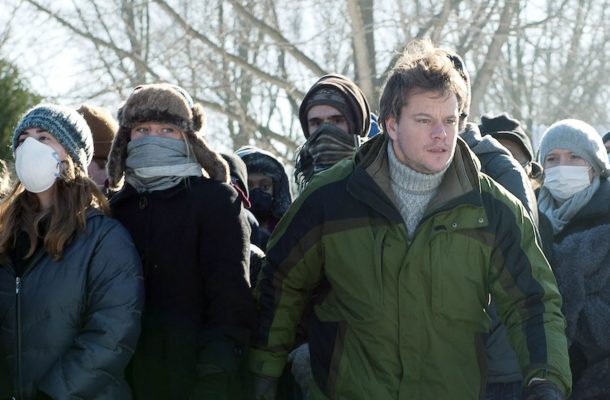Learning from disaster movies

The film Contagion depicts the breakdown of society as the world struggles to respond to the rise of an unforeseen global pandemic.
Chances are you’ve seen it—the film is currently trending on streaming services.
In part, Contagion presciently predicted the current crisis we face with coronavirus. It is also a potent reminder of what can happen when we begin to see our fellow citizens as a potential threat.
For many, the past few weeks have felt surreal.
From dramatic images of people fighting over toilet paper to rousing scenes of collective singing or applause in support of health workers, the experience has sometimes felt like the plot of a movie.
We’re unlikely to see a third act plot twist in which a solitary hero finds a cure — but we can celebrate and thank the many everyday heroes who are working tirelessly to flatten the curve, care for people who are at risk, and develop a vaccine.
Uniting against a common threat
Although this isn’t a movie, we can look to cinema for some guidance as to what to expect in the coming months. And movies may even teach us a lesson about how to stay connected as we as a society as we deal with the growing threat.
Australian social psychologists have documented how people respond to threats of various kinds.
To do this, they distinguish between threats that originate from outside a group — so-called intergroup threats — and threats that originate from within a group — referred to as intragroup threats.
Global pandemics like the one we face now are an example of a within-group threat, where our fellow citizens become a source of potential danger.
Events like terrorism or war are between-group threats, where the members of one group aim to harm members of another group.
Apocalypse now
These between-group and within-group threats can also be seen in pop culture in the form of alien invasion films and zombie apocalypse films.
People typically respond to between-group, or alien-like, threats by drawing together as a society in a show of social cohesion.
It’s the kind of reaction shown by humankind in the fight against the attacking aliens in Independence Day.
On the other hand, within-group, or zombie-like, threats tend to lead to a breakdown in trust between people. And it’s for this reason that zombie films like 28 Days Later often feature the descent of society to a point where even non-infected people are considered dangerous.
The lesson from these movies and our research is that how we think about threats can affect how well we mobilise to respond to them.
Responding to a crisis
If we think about coronavirus as a threat that comes from our fellow citizens, we will be less trusting of others and less willing to help others.
But if we think about it as a threat that is external to us — something that is attacking our cells, our selves, and our societies — it will help us band together collectively and more effectively respond to the health crisis we currently face.
It’s important to externalise the virus as its own entity, rather than the fault of any one particular group, like Donald Trump’s false naming of coronavirus as a “Chinese virus”.
Instead, we should think about the virus as something that humankind can collectively overcome, much like the worldwide response shown in fighting off the alien invasion in the film Signs.
Not only will a show of social solidarity allow us to deal with the challenges of coronavirus better as a group, it will even help us personally.
Being socially connected with others is one of the most important things we can do to improve our mental health and physical health.
This means it’s more important than ever now that we continue to stay socially close even when we’re physically distant.
Experts are making recommendations for how to connect with others when we might be physically isolated in the coming months.
So, if you’re searching for movies to watch while on lockdown, maybe consider selecting War of the Worlds rather than World War Z – it might teach you something about humankind.
This article was written by Dr Katharine H. Greenaway of the University of Melbourne and Dr Tegan Cruwys of the Australian National University and published by Pursuit.
Dr Katie Greenaway is a senior Lecturer In Psychology at the University of Melbourne. Her research focuses on identity processes, emotion regulation, and human agency to understand the formation and consequences of social connections between people.














